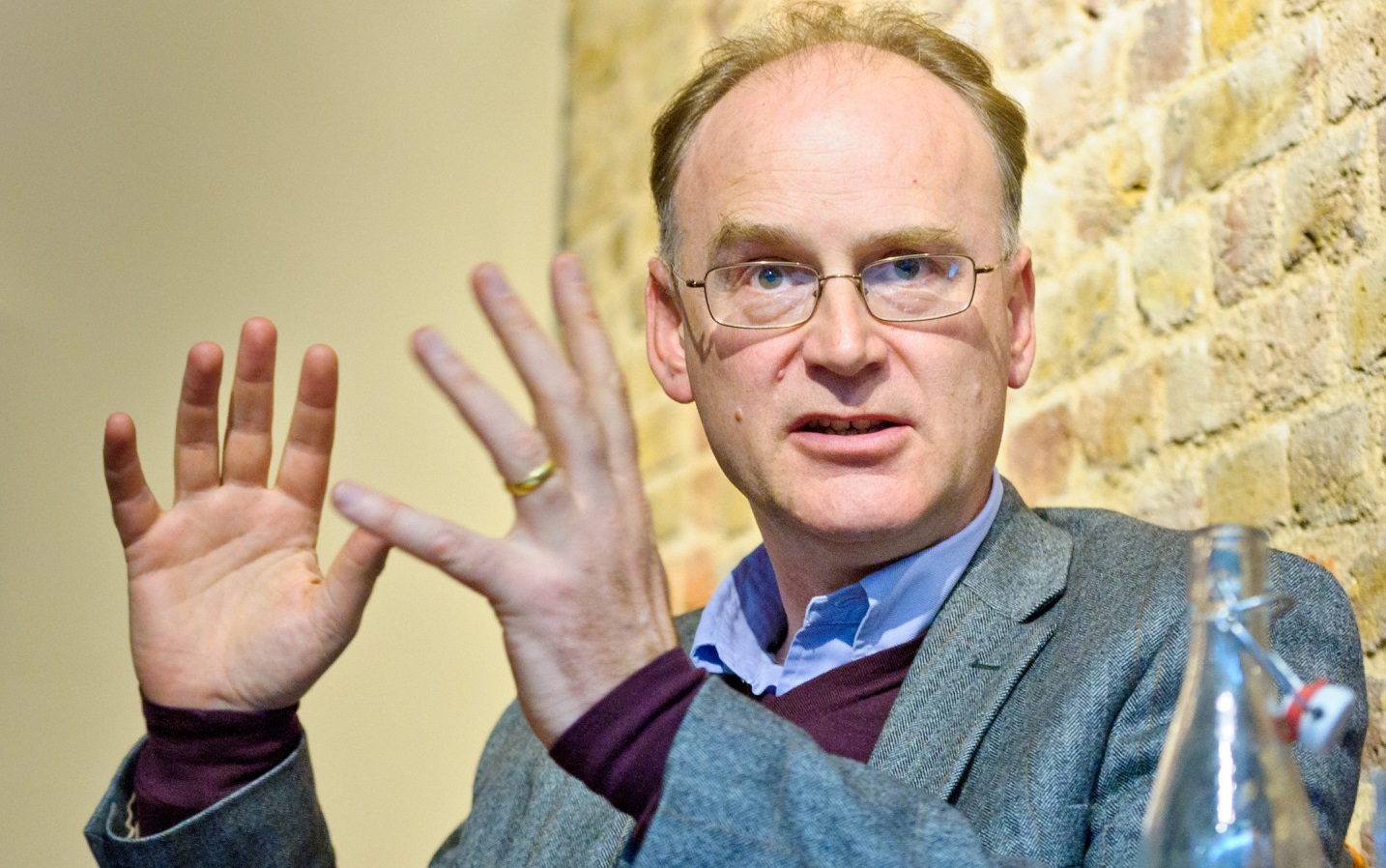Until 2004 Britain was a net energy exporter. Today, it imports about half its energy. Some of that, in the form of coal and liquefied natural gas, comes directly from Russia, which also supplies a third of Europe’s gas through pipelines. The unprecedented “gas deficit warning” of March 2 was a sharp reminder of our dependence on imports.
Yet Britain is swimming in energy. Enough sunlight falls on the country to power the economy many times over. Wind, wave, water and tidal power cascade over us. There is wood in our forests. There are hot rocks beneath Cornwall and Durham, gas under Lancashire and enough coal under the North Sea to last centuries. We could easily buy sufficient uranium to keep us going indefinitely. And if we were to crack nuclear fusion, all we would need is a little bit of water and some Cornish lithium.
So what’s the problem? The human race has a plethora of options for powering civilisation in the 21st century, not a dearth. The problem is not energy, but energy conversion. Economic growth is effectively a matter of turning energy into complex structures that can be energised to do work. Energy conversion is the lifeblood of civilisation. Just as biology harnesses energy to build bodies and ideas, so human society captures energy to make physically improbable entities such as buildings, governments and social-media platforms. Energy conversion enables us to avoid entropy, the drift towards chaos.
The modern world stands on a cairn built by energy conversions in the past. Just as it took many loaves of bread and nosebags of hay to build Salisbury Cathedral, so it took many cubic metres of gas or puffs of wind to power the computer and develop the software on which I write these words. The Industrial Revolution was founded on the discovery of how to convert heat into work, initially via steam. Before that, heat (wood, coal) and work (oxen, people, wind, water) were separate worlds.
To be valuable, any conversion technology must produce reliable, just-in-time power that greatly exceeds — by a factor of seven and upwards — the amount of energy that goes into its extraction, conversion and delivery to a consumer. It is this measure of productivity, EROEI (energy return on energy invested), that limits our choice.
By the EROEI criterion, biofuel is a disastrous choice, requiring about as much tractor fuel to grow as you get out in ethanol or biodiesel. Wind power has a low energy return, because its vast infrastructure is energetically costly and needs replacing every two decades or so (sooner in the case of the offshore turbines whose blades have just expensively failed), while backing up wind with batteries and other power stations reduces the whole system’s productivity. Geothermal too may struggle, because turning warm water into electricity entails waste. Solar power with battery storage also fails the EROEI test in most climates. In the deserts of Arabia, where land is nearly free, sunlight abundant and gas cheap, solar power backed up with gas at night may be cheap.
Fossil fuels have amply repaid their energy cost so far, but the margin is falling as we seek gas and oil from tighter rocks and more remote regions. Nuclear fission passes the EROEI test with flying colours but remains costly because of ornate regulation.
Which brings me to nuclear fusion, a process potentially with a wildly positive EROEI (it fuels the sun and the H-bomb) but that so far has proved impossible to control. Fusion’s ever-receding promise suggests caution, but a British company, Tokamak Energy, is increasingly confident it can generate electricity by 2030, ahead of its American rivals. It forecasts ten large (1.5 GWe) power plants a year being built by 2035, and a hundred by 2040. It is a cheeky, private-sector upstart challenging the slow, international, public-sector collaboration on fusion.
The new fusion optimists base their confidence on yttrium barium copper oxide (YBCO), a novel superconducting material that allows smaller, less cold but more powerful magnets. Britain is a world leader in YBCO technology, so it is not impossible that we could see a breakthrough here in the next two decades comparable to Thomas Newcomen’s steam invention of 1712.
Suppose fusion does make the “too cheap to meter” breakthrough that fission failed to make. We could then stop worrying about carbon dioxide, but what would we do with all this energy? We could make as much fresh water as we fancied, through desalination, to water the deserts. We could grow food indoors to release the countryside for nature. We could electrify all transport. We could enable Africa to become as wealthy as America.
A green misery-monger called Paul Ehrlich once wrote that giving cheap, abundant energy to humanity would be like “giving an idiot child a machine gun”. On the contrary, cutting the cost of energy is absolutely central to delivering prosperity and fairness. This is why it is so baffling that Britain keeps pushing up the price of energy to encourage the medieval technologies of wood, wind and water power.
Professor Dieter Helm’s official review of government energy policy last year found that we could have reduced carbon dioxide emissions for far less than the £100 billion already spent on renewables by encouraging a switch to gas. But, as he says, governments are bad at picking winners, while losers are good at picking governments. Meanwhile, Germany, which has spent something like a trillion euros on support for green energy, is now building lots of coal-fired power to keep the lights on.
At huge cost, Germany is learning that you cannot have a cheap, reliable, low-carbon grid without the high EROEI of nuclear. The Energiewende is a historic error. But is there any guarantee governments would suddenly be more rational if fusion came along?
To be valuable, any conversion technology must produce reliable, just-in-time power that greatly exceeds — by a factor of seven and upwards — the amount of energy that goes into its extraction, conversion and delivery to a consumer. It is this measure of productivity, EROEI (energy return on energy invested), that limits our choice.
You could make your own electricity on an exercise bicycle, eating organic ice cream as fuel, but such a system would have wildly negative EROEI once you include the energetics of farming cattle and making ice cream. It would also produce a pathetic trickle of power: about 50 watts (joules per second). The average Briton uses about 4,000 watts, as much energy as if she had 240 slaves on exercise bicycles in the back room, pedaling eight-hour shifts. That’s roughly what “civilisation” looked like in Ancient China Egypt or China.
By the EROEI criterion, biofuel is a disastrous choice, requiring about as much tractor fuel to grow as you get out in ethanol or biodiesel. Wind power has a low energy return, because its vast infrastructure is energetically costly and needs replacing every two decades or so (sooner in the case of the offshore turbines whose blades have just expensively failed), while backing up wind with batteries and other power stations reduces the whole system’s productivity. Geothermal too may struggle, because turning warm water into electricity entails waste. Solar power with battery storage also fails the EROEI test in most climates. In the deserts of Arabia, where land is nearly free, sunlight abundant and gas cheap, solar power backed up with gas at night may be cheap.
Fossil fuels have amply repaid their energy cost so far, but the margin is falling as we seek gas and oil from tighter rocks and more remote regions. Nuclear fission passes the EROEI test with flying colours but remains costly because of ornate regulation.
Which brings me to nuclear fusion, a process potentially with a wildly positive EROEI (it fuels the sun and the H-bomb) but that so far has proved impossible to control. Fusion’s ever-receding promise suggests caution, but a British company, Tokamak Energy, is increasingly confident it can generate electricity by 2030, ahead of its American rivals. It forecasts ten large (1.5 GWe) power plants a year being built by 2035, and a hundred by 2040. It is a cheeky, private-sector upstart challenging the slow, international, public-sector collaboration on fusion.
The new fusion optimists base their confidence on yttrium barium copper oxide (YBCO), a novel superconducting material that allows smaller, less cold but more powerful magnets. Britain is a world leader in YBCO technology, so it is not impossible that we could see a breakthrough here in the next two decades comparable to Thomas Newcomen’s steam invention of 1712.
Suppose fusion does make the “too cheap to meter” breakthrough that fission failed to make. We could then stop worrying about carbon dioxide, but what would we do with all this energy? We could make as much fresh water as we fancied, through desalination, to water the deserts. We could grow food indoors to release the countryside for nature. We could electrify all transport. We could enable Africa to become as wealthy as America.
A green misery-monger called Paul Ehrlich once wrote that giving cheap, abundant energy to humanity would be like “giving an idiot child a machine gun”. On the contrary, cutting the cost of energy is absolutely central to delivering prosperity and fairness. This is why it is so baffling that Britain keeps pushing up the price of energy to encourage the medieval technologies of wood, wind and water power.
Professor Dieter Helm’s official review of government energy policy last year found that we could have reduced carbon dioxide emissions for far less than the £100 billion already spent on renewables by encouraging a switch to gas. But, as he says, governments are bad at picking winners, while losers are good at picking governments. Meanwhile, Germany, which has spent something like a trillion euros on support for green energy, is now building lots of coal-fired power to keep the lights on.
At huge cost, Germany is learning that you cannot have a cheap, reliable, low-carbon grid without the high EROEI of nuclear. The Energiewende is a historic error. But is there any guarantee governments would suddenly be more rational if fusion came along?
This first appeared in The Times of London.





